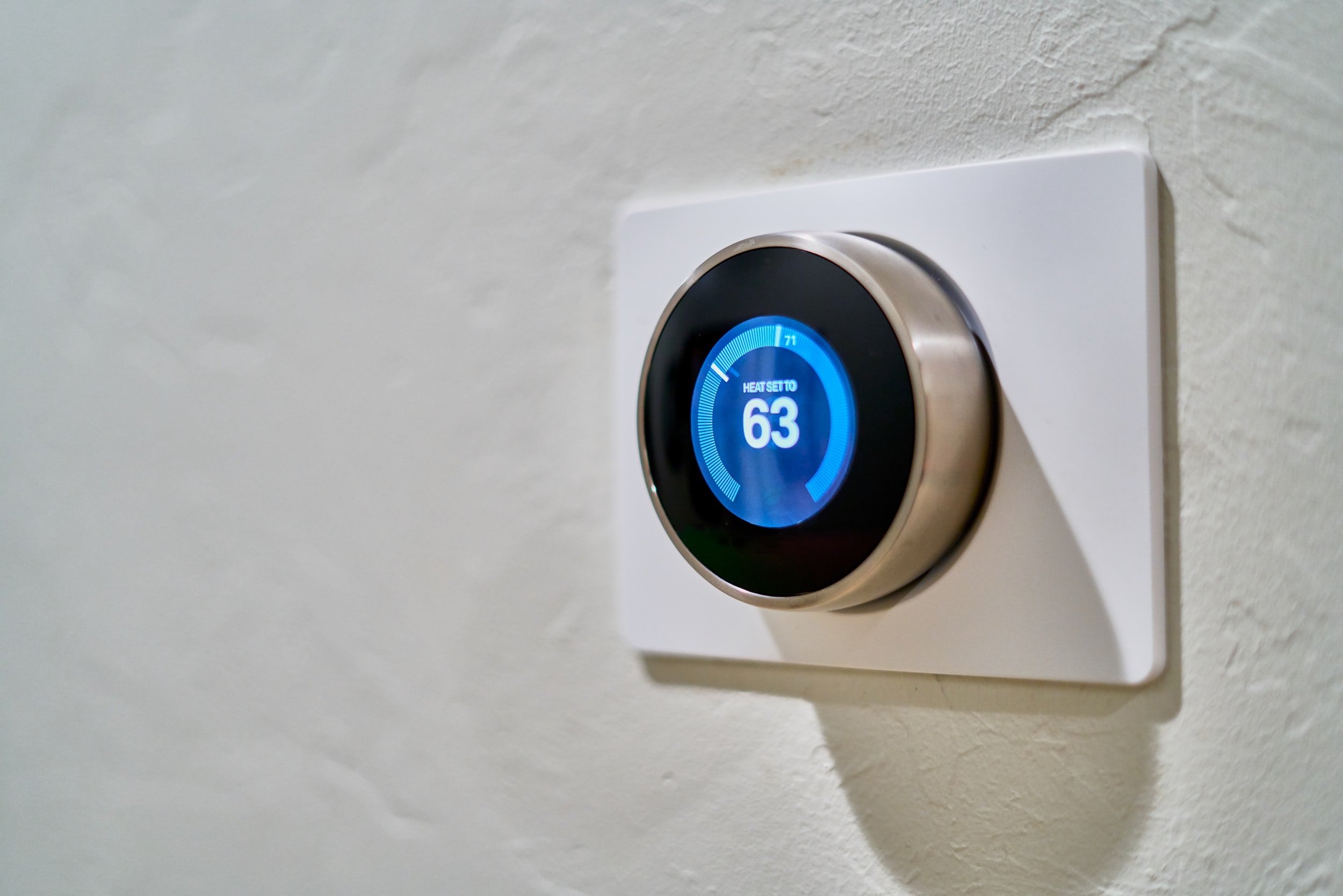10 Eco-Friendly Settings for Your Thermostat to Save Money
If you're looking to be more eco-friendly in your home, one simple way is to change your thermostat settings. In this blog post, we'll go over some of the best settings to help save energy (and money)!
How to save money and conserve energy with your thermostat
Making small changes to your thermostat temperature can have big impacts on both your wallet and the environment.
By adjusting your temperature settings so that you are using your heating or cooling system relatively conservatively, you can significantly reduce the amount of energy consumed.
This minor change in lifestyle can mean significant savings in energy bills over time, as well as more efficient use of the resources available to us.
Heating and cooling channels make up a larger portion of most home's energy usage than any other source, making it one of the most efficient places to begin when looking for ways to save money and conserve energy.
Learning how best to work with your thermostat and making adjustments accordingly is a great way to lower costs and help preserve our environment simultaneously.
The ideal temperature for your home in the summer and winter months
Keeping your home at the right temperatures in the summer and winter months can be a challenge, especially when the outdoor temperature is so high or so low.
What Should I Set My Thermostat To During the Summer?
During the summer, keeping your home cool can help keep energy costs down while making sure your family stays comfortable indoors.
But before you reach for that air conditioner, make sure you have well-insulated windows, draw the blinds over very sunny light, and make use of more ways to combat the summer heat before you touch your thermostat
Then, the best thermostat settings for the hot months is recommended to be 78 degrees Fahrenheit while you are home.
However, if you live in an extremely hot area, have babies, or have elderly people in your home 65-75 degrees Fahrenheit is recommended by JustEnergy. These recommended temperatures will keep your home cooler without over-cooling.
If it's the outside temperature is not quite hot enough to turn on your air conditioner, use a ceiling fan or box fan to promote air flow throughout your home.
What Should I Set My Thermostat to During the Winter?
For winter thermostat settings, it's best to set your thermostat to approximately 68 degrees during the day and 60 at night to ensure warmth without wasting an excessive amount of energy.
Additionally, during cooler temperatures you can use space heaters and extra blankets if needed. Wearing socks, scarves, sweatshirts, sweaters, and layers helps keep you warm before you crank up the heat (and heating bills!)
It's recommended to take advantage of insulation around windows, doors and other openings in the home as well – this can help maintain an optimal temperature no matter the season.
If you aren't home during the day or struggle to remember to adjust your heating system, install a smart thermostat where you can set-and-forget your temperature preferences.
Energy.gov reports that consumers can save as much as 10% a year on heating and cooling by simply turning your thermostat back 7°-10°F for 8 hours a day from its normal setting.
So, if you're leaving the house for a few hours or going on vacation be sure to adjust your thermostat.
Why it's important to be mindful of your energy consumption
Conserving energy is one way to curb our carbon footprint and live more sustainably. Making eco-friendly choices when it comes to our energy consumption has a large impact on both global and local levels.
On a global scale, using less energy helps regulate climate change, preventing further damage to our planet.
On a local level, energy savings means reducing electricity bills, which not only provides more money in your pocket but also supports a healthier lifestyle as air pollution caused by burning of fossil fuels leads to serious health problems.
By investing in renewable sources of energy like solar power, we can reduce our environmental impact and create a sustainable future for generations to come.
How you can make a difference by conserving energy in your home
Conserving energy in your home is a great way to make a difference for the environment. There are several simple, easy-to-implement strategies that can help you save energy and money while decreasing your environmental impact.
Adjusting your thermostat to just one degree lower or higher than usual can significantly decrease energy consumption over time.
Installing LED lightbulbs in all of your main living spaces is also an effective method; it reduces energy consumption related to lighting up to 90% and these lightbulbs last 25 times longer. Energy.gov also reports that 15% of an average home's electricity use, and the average household saves about $225 in energy costs per year by using LED lighting.
Properly insulating your home will keep warm air from escaping and cold air from entering during extreme temperatures, helping you maintain a more consistent temperature throughout the year.
Reaching for more layers to wear with a lower temperature outdoors or shutting your blinds during the summer days when there is a high temperature can help you conserve energy.
Lastly, replacing old appliances with newer models that feature the Energy Star label guarantees they operate more efficiently than outdated models.
Applying these sustainable solutions into your daily routine could make a big difference in helping the planet and saving money.
Tips for setting your thermostat to reduce your carbon footprint
Reducing your carbon footprint and living a more eco-friendly lifestyle is an important goal, and setting your thermostat is a simple way start doing this. Here are some quick tips & reminders on how to use your thermostat to reduce your carbon footprint.
During the cold winter months, keep the temperature on your digital thermostat set below 68 degrees Fahrenheit for energy efficiency. This step will use significantly less electricity than keeping it set at a higher temperature.
During hot summer days, turn the air conditioning temperature up to 78 degrees or higher so as not to over-cool the house.
Smart technology is emerging that can help you fine tune temperatures automatically and save even more energy and money with programmable thermostats.
Consider exploring smart thermostats that have these settings or allow you to adjust your thermostat from your phone when you are away.
Additionally, use natural heating and cooling methods whenever possible such as opening windows and using ceiling fans to circulate cool air during warm seasons and to get rid of pockets of warm air in the cool season.
From turning your thermostat down in the winter, to taking advantage of your programmable thermostat in the summer, there are many different ways to take a stand and be more eco-friendly in your home.
You can do more than just live sustainably; you can make a huge difference by reducing your energy consumption.
Plus, you will also save money on utility bills when you lower your heating costs and cooling costs as a result. For more guidance, ask your energy provider if there are peak hours you can be aware of for energy use - time of day can make a big difference in cost, too!
Showing respect for the environment is essential for future generations and promoting sustainability should be our number one priority. The best way to make big changes is to start with simple and easy tips like these, while educating yourself on energy efficency.
These efforts can help the environment now and for years to come. It doesn’t take too much effort and can have many long-term benefits, so why not start saving energy today?
Hopefully this guide gave you some easy tips on how to adjust your thermostat for a more eco-friendly lifestyle and to save a little more money.
For more ethical & sustainable tips be sure to explore more conscious lifestyle blog posts, follow The Honest Consumer on social media, subscribe to our newsletter, & check out the Ethical & Sustainable Brand Directory.






















